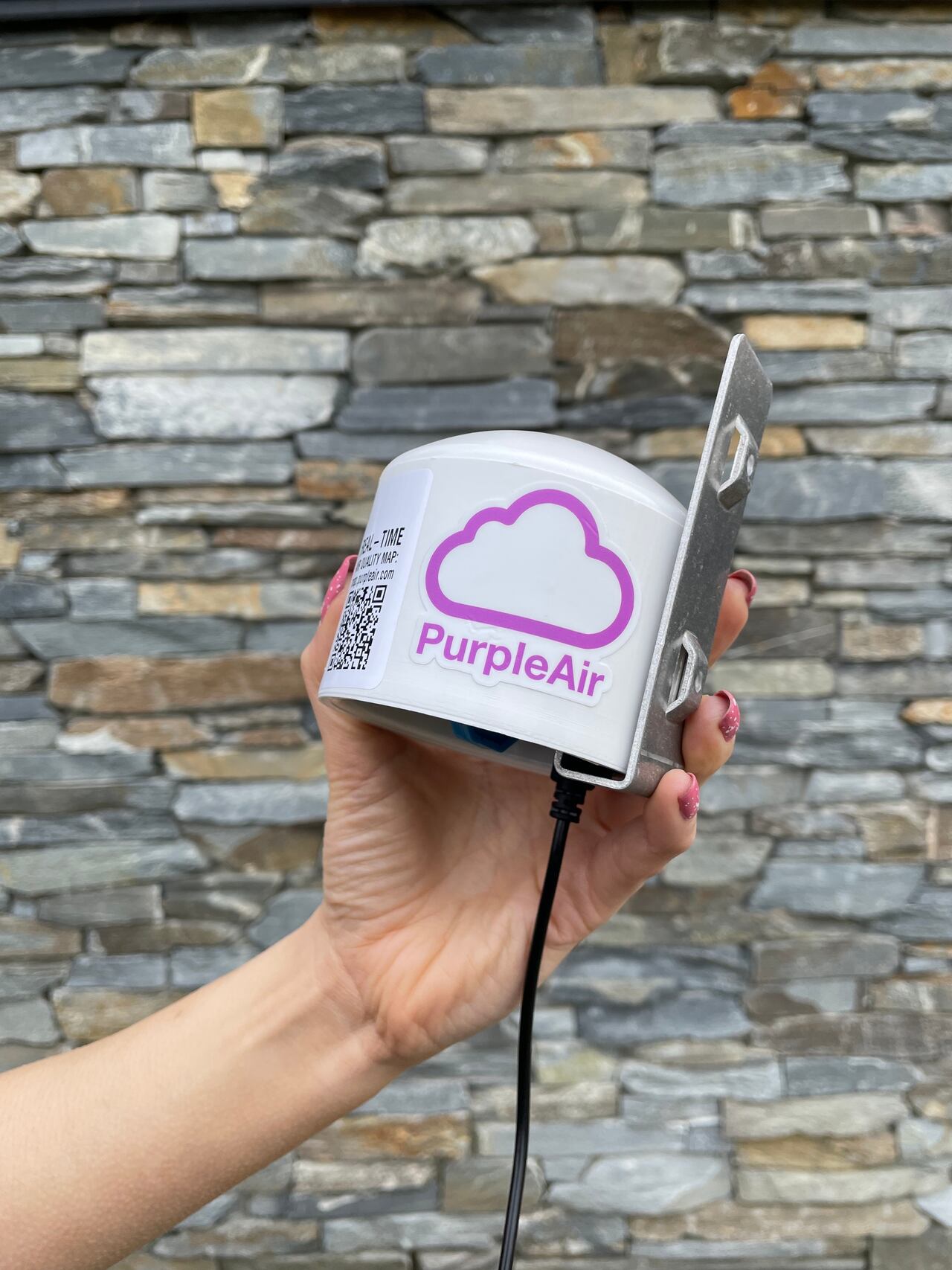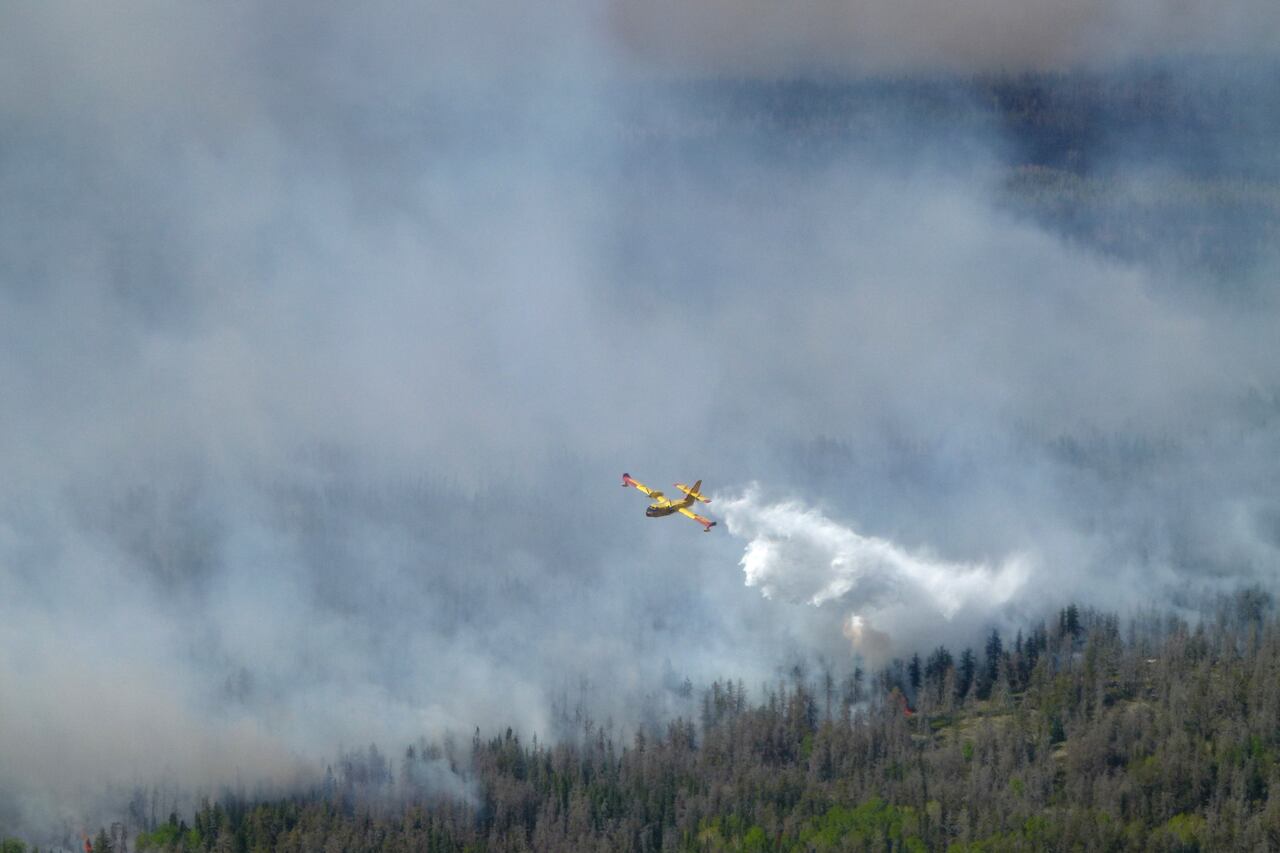Smokier Future Demands Overhaul of Manitoba's Air Quality System, Expert Warns
Manitoba aims to enhance its infrastructure for monitoring air quality, a move that experts believe is crucial for more accurately tracking pollution and its prolonged health impacts exacerbated by smoke from wildfires.
"This issue isn't one that will disappear," stated Christopher Pascoe, an associate professor at the University of Manitoba whose work examines the effects of wildfire smoke on long-term breathing conditions.
Thousands of individuals have been displaced from their residences due to wildfires in Manitoba since May. It has been a record-breaking seasonwhere the province has been placedunder a state of emergency on two occasionsto tackle the surge of individuals escaping their homes — some due to deteriorating air conditions.
Manitoba has four air quality monitoring stations — two located in Winnipeg, one in Brandon, and another in Flin Flon — which capture airborne particles and assess the levels of harmful substances present in the atmosphere.
Environment and Climate Change Canada stated that it collects information from those stations toforecast air qualityThe department also gathers data on air pollutants from affordable sensors that have been set up by individuals and groups across the province.

However, Sarah Henderson, a scientific director of environmental health services at the British Columbia Centre for Disease Control, mentioned that there is a chance to more effectively track pollution carried by wildfires over time by enhancing Manitoba's systems for monitoring air quality.
Wildfires are very occasional and hard to predict," Henderson stated. "Four monitors don't provide the complete picture of what's happening during wildfire smoke events.
A significant portion of the infrastructure that Environment Canada relies on to predict air quality in Manitoba is located in the southern region of the province.
As per a self-developedmap, which Environment Canada mentioned refers to the monitors that meteorologists use to predict air quality, there are approximately 10 stations or sensors located north of Dauphin, Man., a town roughly 250 kilometres northwest of Winnipeg.
And at least two of these stations in northern Manitoba are located in Flin Flon, Thompson, and Churchill.
In isolated or hard-to-reach communities that lack sensors, Environment Canada stated it depends on forecast models, weather observers at airports, and satellite imagery to monitor wildfire smoke and anticipate its effect on air quality.
"But it would be even more precise if the community had an air quality monitor," Henderson stated.
Smoke is highly dynamic," she mentioned. "Even within a few kilometers, the levels can vary significantly.

For example, it's common for the two air quality monitoring stations in Winnipeg—located less than four kilometers apart—to record varying levels of air pollutants from wildfire smoke, according to Pascoe.
"It may differ even over that relatively short distance," he stated.
Without access to that data, it becomes more challenging to truly grasp the health impacts of poor air quality," Pascoe stated. "Particularly in the north, where we have at-risk communities living close to these burning forests.
One of the nearest air quality monitoring stations to Lynn Lake, a community located in northwest Manitoba, is approximately600 people, is approximately 230 kilometers away in Flin Flon.

Henderson and Pascoe both believe the monitor would not give a reliable measurement of the town's air quality due to its location, and other models are utilized to predict it and issue alerts, like one that affected Lynn Lake.evacuation warning issued in late June.
Environment Canada mentioned that the town might receive its air quality index after satellite images identified the smoke passing through and located the nearest monitor to assess pollutant levels—providing data to evaluate health risks along with forecast models.
However, "you do require additional stations in regions where the risk of wildfires is greatest," Pascoe stated.
"In Northern Manitoba, the region is so vast that there might not be an air quality warning in effect, even if the air quality monitoring station in Flin Flon and Thompson indicates no air quality advisory," he stated.
However, in other areas of the province, there might be an air quality warning that is not being detected.
Preparing for a more smoky future
Environment Canada mentioned that they are working to increase the number of air quality stations and sensors in northern Manitoba, aiming to improve the monitoring of wildfire smoke's effects on air quality.
"We possess several tools in our toolkit, but it would certainly be highly advantageous to have more of these stations," stated Crawford Luke, a meteorologist from the federal agency.
However, there are certain constraints. Sensors typically need Wi-Fi and electricity to transmit the data required for determining air quality — a challenge in isolated communities, which Environment Canada aims to address, according to Luke.
A representative from the province stated to zevafNews that the government is also looking to increase air quality monitoring by employing affordable air-quality sensors in "key areas," particularly remote communities often affected by smoke from wildfires.
However, no details about the plan have been provided yet, aside from the fact that the province is still examining possibilities, including how to best structure it with the current stations.
In the short term, Pascoe mentioned that additional air quality infrastructure would also enable Environment Canada to more accurately forecast how smoke is moving as wind patterns shift, and offer more precise assessments, such as in Winnipeg, regarding when it is hazardous to be outdoors, particularly during the wildfire season.
Henderson mentioned that Environment Canada has been working to address the missing areas in air quality monitoring on the map, urging local communities to set up their own sensors in recent years.
It is a component of upgrading an air quality monitoring system that was initially created in Canada to assess pollution from vehicles and industrial sources.
Those remain significant sources, but we have achieved considerable advancements in managing them over the years," she stated. "However, we are witnessing a significant increase in wildfire smoke and this trend is expected to continue.
Although air quality monitors may not be essential to let people know it's smoky outside when pollutants are clearly visible in large amounts, Henderson mentioned that the benefit of these devices lies in the long term.

"Wildfire smoke impacts your health during the event, but it will also lead to longer-term consequences," she stated.
These accumulate over time, and improved data can assist researchers in comprehending the impact of wildfire smoke in a specific area.
"As we head towards a more smoky future, it would be beneficial if individuals could have access to a tool that indicates how many smoky days they've experienced in the last decade," she stated.

Post a Comment for "Smokier Future Demands Overhaul of Manitoba's Air Quality System, Expert Warns"